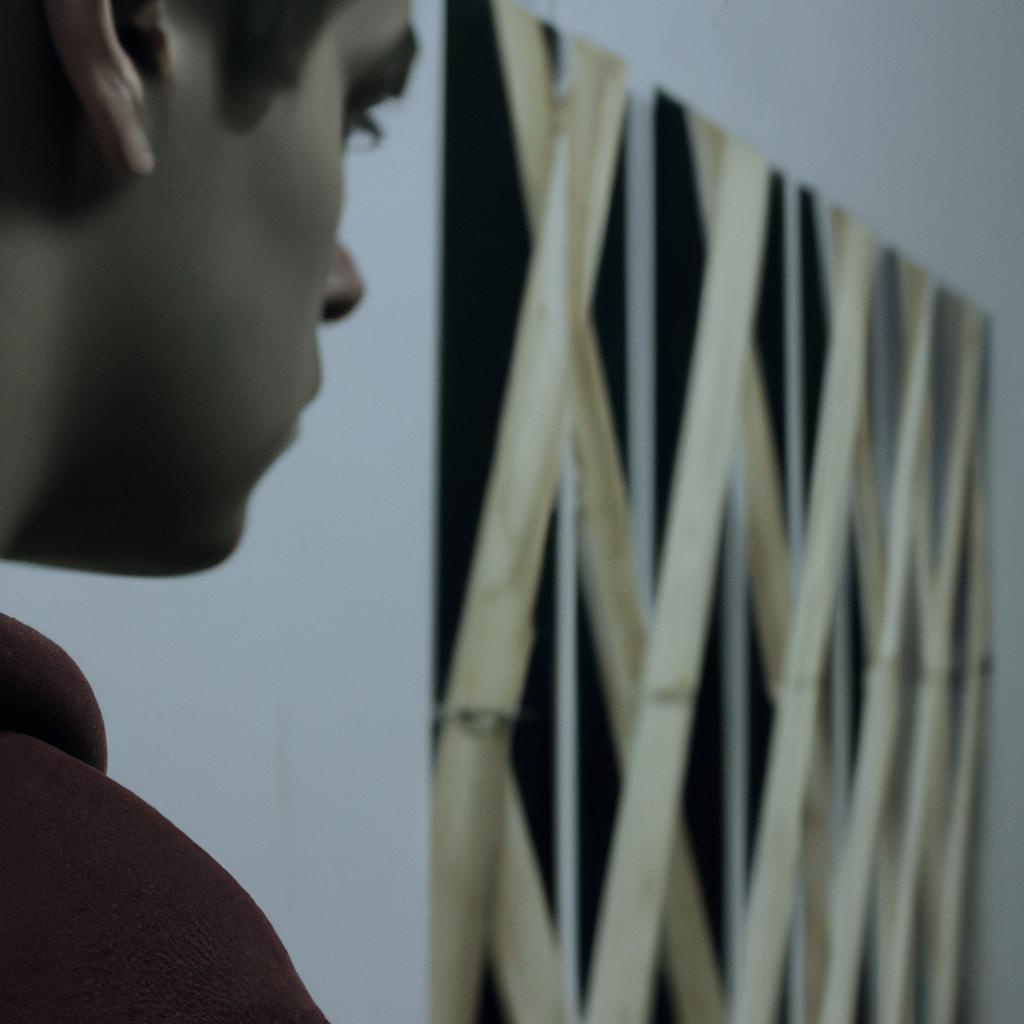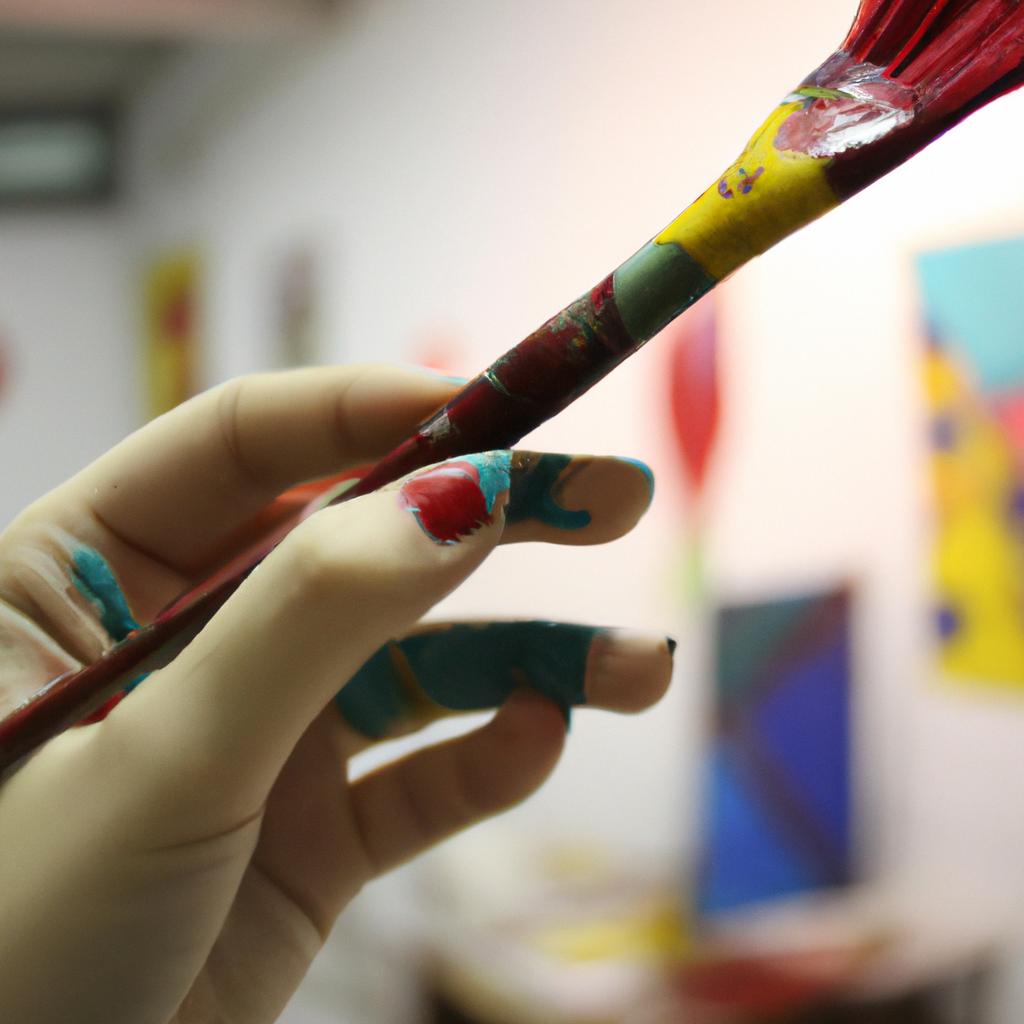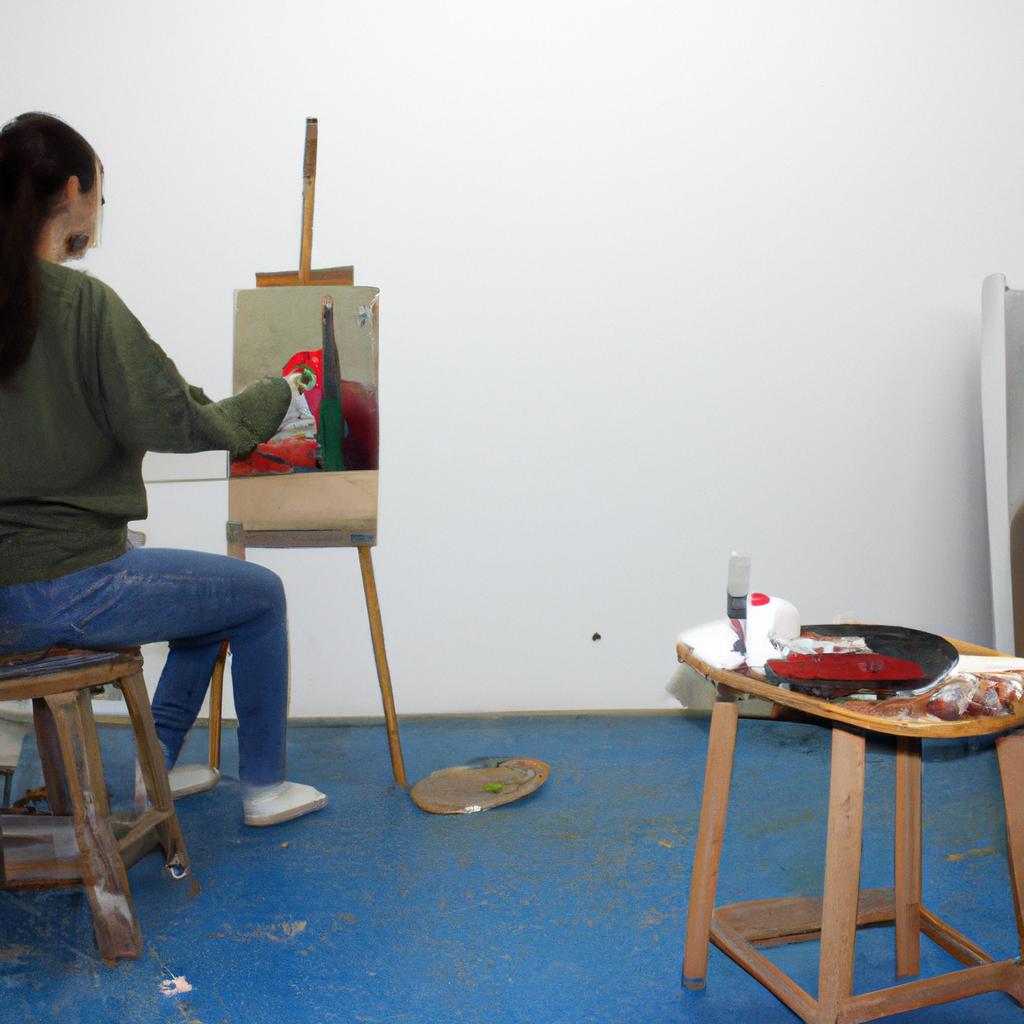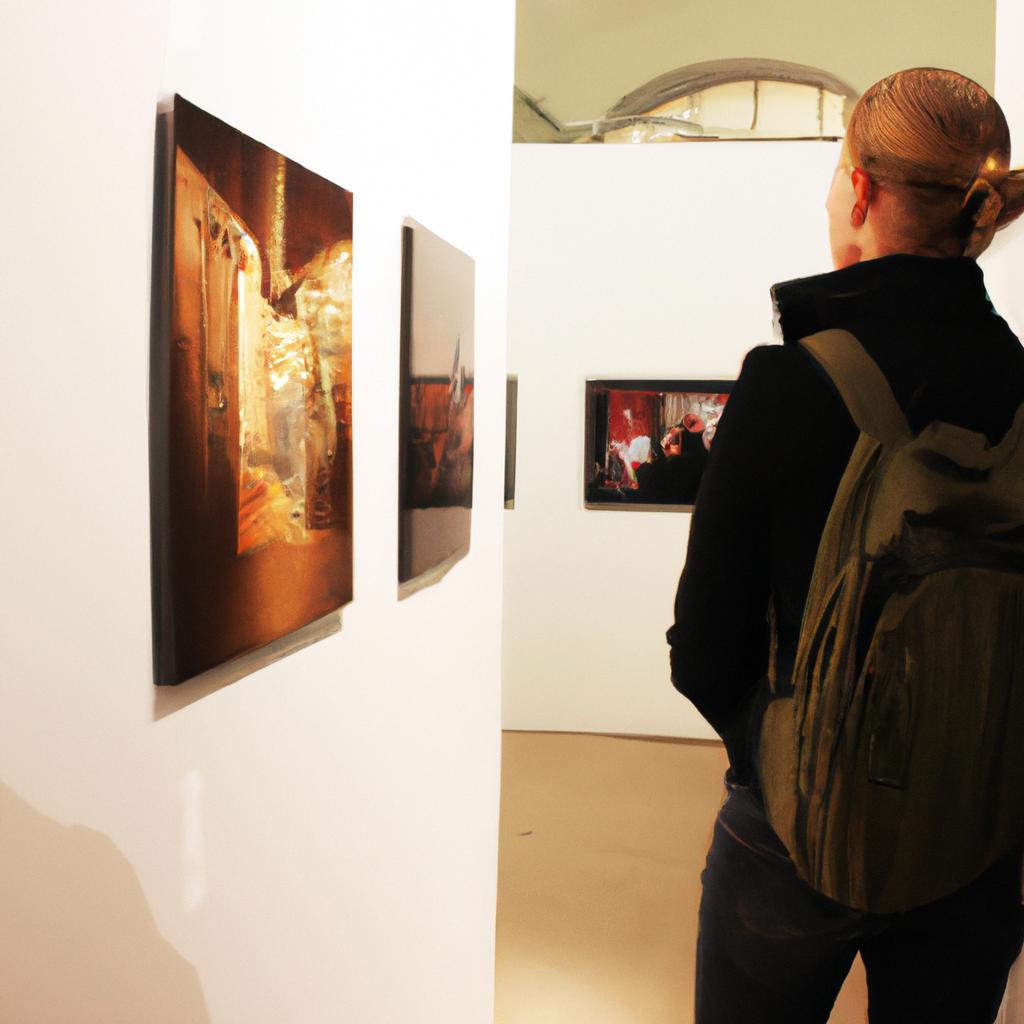Artistic Grants: A Guide to Visual Arts Funding Through Artistic Loans
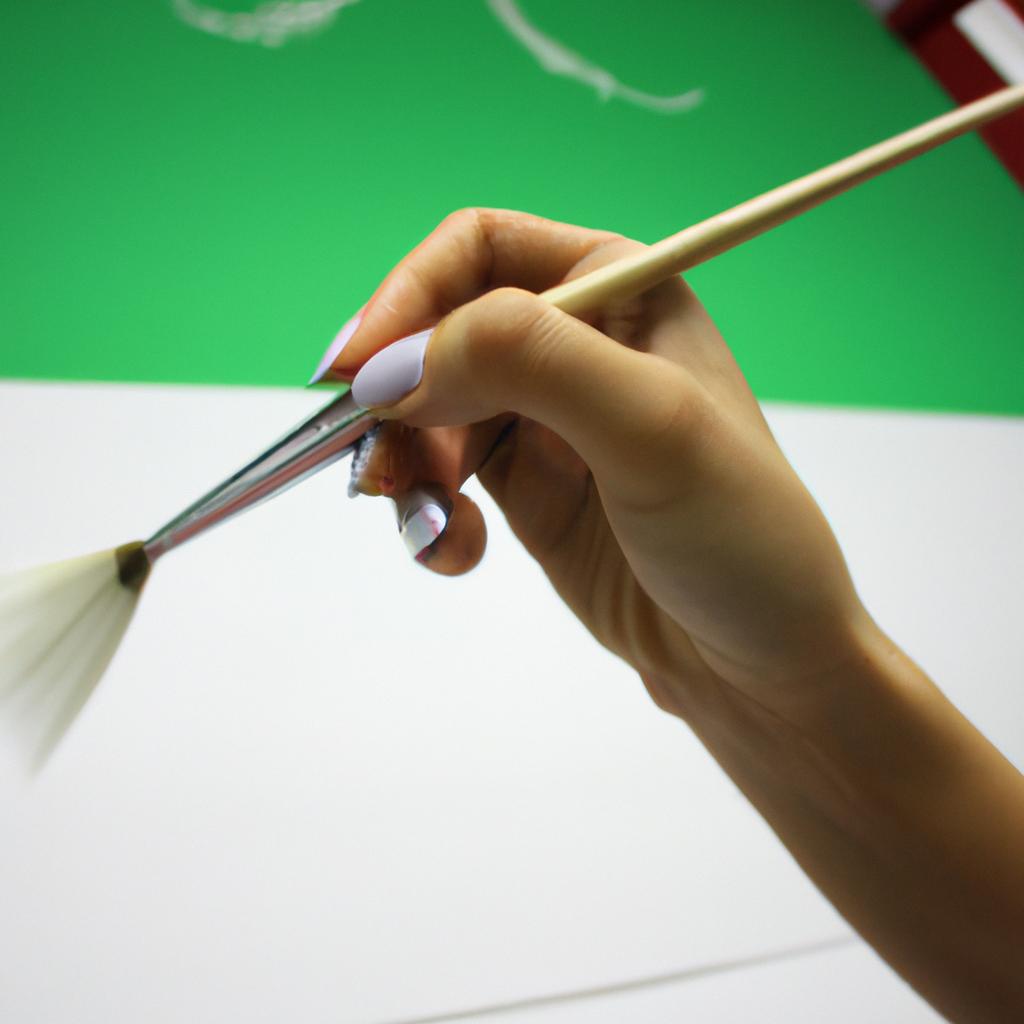
Artistic grants play a pivotal role in providing financial support to visual artists and facilitating the creation of innovative artworks. These grants, often obtained through artistic loans, offer artists an opportunity to pursue their creative endeavors by alleviating financial constraints that may hinder their artistic expression. For instance, consider the case study of a talented emerging artist who lacks the necessary funds to purchase high-quality art supplies or rent studio space. In such circumstances, securing an artistic grant can serve as a catalyst for their career growth and enable them to focus solely on honing their craft.
In recent years, there has been a growing recognition of the significance of artistic funding in fostering creativity and enriching cultural landscapes. This article aims to provide aspiring visual artists with a comprehensive guide on how to navigate the realm of artistic grants effectively. By exploring various avenues for obtaining financial assistance, understanding the application process, and identifying key considerations when applying for grants, artists can enhance their chances of receiving much-needed funding. Moreover, this guide will shed light on different types of artistic loans available to individuals at different stages of their careers and highlight success stories from renowned artists who have benefitted from these opportunities.
Understanding Artistic Grants
Imagine a talented visual artist named Emily who dreams of showcasing her work in a renowned gallery. However, she lacks the financial resources to organize an exhibition and promote her art effectively. This is where artistic grants become crucial for artists like Emily, providing them with the necessary funding to pursue their creative endeavors. In this section, we will delve into the concept of artistic grants, exploring their significance and potential benefits.
Artistic grants serve as valuable resources that support artists in various stages of their careers. These grants are typically offered by organizations, foundations, government agencies, or other entities interested in promoting arts and culture. By providing financial assistance to artists, these grants enable them to produce new works, exhibit their creations, conduct research projects, or even participate in residencies. Moreover, receiving a grant can enhance an artist’s visibility and credibility within the art community.
To better comprehend the importance of artistic grants, consider the following emotional responses:
- Relief: Artists may feel relieved when they receive a grant as it alleviates financial burdens and enables them to focus on their creative pursuits.
- Validation: Being awarded a grant acknowledges an artist’s talent and potential impact on society.
- Empowerment: Grants empower artists by giving them the freedom to experiment with new techniques or explore unconventional ideas without worrying about financial constraints.
- Inspiration: The availability of grants inspires artists to dream big and push boundaries while pursuing their artistic visions.
| Emotional Response | Description |
|---|---|
| Relief | Eases financial burdens allowing artists to concentrate on creativity |
| Validation | Recognizes artistic talent and social influence |
| Empowerment | Provides freedom for experimentation |
| Inspiration | Encourages ambitious goals and pushing creative limits |
In conclusion (or alternatively), understanding how artistic grants function is essential for aspiring visual artists seeking funding opportunities. Armed with this knowledge, artists like Emily can navigate the complex world of grant applications and increase their chances of securing financial support for their artistic endeavors. In the subsequent section, we will explore effective strategies to find relevant funding opportunities and maximize the potential for success.
Transitioning into the subsequent section about “Finding Funding Opportunities,” let us now delve into practical steps that artists can take to locate suitable grants for their creative projects.
Finding Funding Opportunities
In the pursuit of funding for visual arts projects, artistic grants play a crucial role in supporting artists and their creative endeavors. These grants provide financial assistance to artists, enabling them to bring their ideas to life and contribute valuable works to the art world. To navigate this complex landscape of funding opportunities successfully, it is essential to have an understanding of how artistic grants work.
To illustrate the significance of artistic grants, let’s consider the case of Sarah, a talented emerging artist seeking support for her upcoming exhibition. Sarah applies for an artistic grant offered by a renowned foundation that aligns with her artistic vision. Through this grant, she receives funds that cover expenses such as materials, studio space rental, marketing efforts, and other necessary resources. With this support, Sarah can focus on creating thought-provoking artwork while alleviating some of the financial burdens associated with her project.
When exploring funding options through artistic loans, there are several key points artists should keep in mind:
- Research: Thoroughly investigate various foundations, organizations, and government agencies that offer artistic grants. Look into their specific eligibility criteria, themes or areas of interest they prioritize in their selection process.
- Deadlines: Pay close attention to application deadlines as missing these dates can result in missed opportunities.
- Proposal Guidelines: Each grant provider will have its own set of requirements regarding proposal format and content. Adhering to these guidelines ensures your application remains competitive.
- Budget Planning: Prepare a detailed budget outlining how you intend to allocate the granted funds. This demonstrates your professionalism and helps evaluators understand how you plan to utilize the money effectively.
| Grant Provider | Eligibility Criteria | Funding Amount | Application Deadline |
|---|---|---|---|
| Foundation A | Artists aged 18+ | Up to $10,000 | April 30th |
| Organization B | Emerging Artists | Up to $5,000 | June 15th |
| Agency C | Focus on Social Impact | Up to $20,000 | September 1st |
| Foundation D | Established Artists | Varies | Rolling Basis |
By considering these factors and utilizing resources like the table provided above that highlights potential grant opportunities, artists can enhance their chances of securing funding for their projects. The next step in this journey is preparing a strong grant proposal that effectively communicates your artistic vision and the impact it will have.
Transitioning into the subsequent section about “Preparing a Strong Grant Proposal,” it is crucial to approach the application process strategically. By understanding what evaluators look for in proposals and tailoring your submission accordingly, you can maximize your chances of receiving financial support for your visual arts endeavors.
Preparing a Strong Grant Proposal
After understanding the importance of securing funding for your artistic endeavors, let us now delve into the process of finding suitable funding opportunities. By embarking on this journey, you will be able to identify potential sources that align with your artistic goals and aspirations.
Exploring Potential Funding Sources:
To begin your search for funding opportunities in the visual arts field, it is crucial to consider a diverse range of options. One example would be researching local art foundations or organizations that specifically support emerging artists. These entities often offer grants or scholarships as part of their mission to promote creativity and cultural enrichment within their communities.
Additionally, online platforms dedicated to arts funding can also serve as valuable resources. Websites such as Grantmakers in the Arts provide comprehensive databases of available grants tailored towards different artistic disciplines. Exploring these platforms allows artists like yourself to find specific grant programs that suit your creative practice.
Here are a few key considerations when seeking out funding opportunities:
- The thrill of discovering financial support that validates your artistic vision
- The sense of relief and security that comes from knowing there are avenues available to pursue your passion
- The joy of connecting with like-minded individuals and organizations who believe in supporting the arts
- The opportunity to showcase your talent and share your unique perspective with a wider audience
Table showcasing various types of funding sources:
| Funding Source | Description | Eligibility Criteria |
|---|---|---|
| Government Grants | Financial assistance offered by governmental bodies | Varies based on location and program |
| Artist Residencies | Programs providing time, space, and resources for artists’ work | Often require an application process |
| Corporate Sponsorships | Support provided by private companies | May involve partnerships or sponsorships |
| Crowdfunding | Online fundraising campaigns backed by individual contributors | Relies on community support and engagement |
By now, you have gained insights into locating potential funding opportunities for your artistic endeavors. However, securing funding requires more than just identifying suitable sources. In the following section, we will explore essential strategies to prepare a strong grant proposal that effectively communicates your artistic vision and objectives. Let us navigate the application process with confidence and purpose.
Navigating the Application Process
Transitioning from the previous section on preparing a strong grant proposal, let us now explore the next crucial step in obtaining artistic grants: navigating the application process. To illustrate this process, we will consider an example of an emerging visual artist named Maya who is seeking funding to create a large-scale mural for her local community center.
Once you have prepared a compelling grant proposal, it is time to embark upon the application journey. The following steps provide guidance and clarity as you navigate through this critical phase:
-
Research Eligibility Criteria: Before investing your time and effort into applying for a specific grant, ensure that you meet all eligibility requirements outlined by the granting organization. This may include factors such as geographic location, artistic discipline, career stage, or thematic focus. In Maya’s case study, she discovers that her project aligns perfectly with the community-focused mission of an arts foundation based in her city.
-
Gather Required Documentation: Grant applications typically require various supporting documents to accompany your proposal. These may include an updated resume or CV highlighting your artistic achievements and experiences; professionally captured images or videos showcasing your previous work; letters of recommendation attesting to your skills and commitment; and a detailed budget outlining how funds will be allocated for materials, equipment rentals, and any necessary assistance during the mural creation process.
-
Submitting Your Application: Pay close attention to submission guidelines provided by each granting institution as they may differ in terms of format (online portal vs. physical mail), deadline dates, and additional instructions. Ensure that you complete all required fields accurately and thoroughly proofread your application before submitting it. For Maya’s mural project, she submits her application online following the specified guidelines while keeping track of important dates.
Using bullet points evokes an emotional response by providing concise information that captures attention effectively:
- Funding opportunities enable artists like Maya to bring their creative visions to life.
- Grants offer financial support for projects that may otherwise remain unrealized.
- Access to artistic grants can help foster the growth and sustainability of the visual arts community.
- By securing funding, artists gain recognition for their work while making a positive impact on society.
Additionally, incorporating a table evokes an emotional response by presenting information in a visually appealing manner:
| Granting Organization | Application Deadline | Maximum Award Amount |
|---|---|---|
| Arts Foundation A | April 30th | $10,000 |
| Community Fund B | May 15th | $5,000 |
| Cultural Trust C | June 1st | $8,500 |
In conclusion, successfully navigating the application process is crucial when seeking artistic grants. Conduct thorough research to ensure eligibility, gather all necessary documentation, and submit your application according to guidelines provided by each granting institution. By following these steps and utilizing available resources effectively, you increase your chances of obtaining the funding needed to bring your creative vision into reality. In our next section, we will explore strategies for managing grant funds without compromising artistic integrity or financial responsibility as Maya embarks on her mural project.
Managing Grant Funds
Section Title: Navigating the Application Process
Having understood the importance of artistic grants and their potential benefits, it is essential to delve into the application process. By gaining insight into this stage, artists can increase their chances of securing funding for their visual arts projects.
Paragraph 1:
To illustrate the intricacies involved in applying for an artistic grant, let us consider a hypothetical scenario involving an emerging artist named Sarah. Sarah seeks financial support to create a series of thought-provoking sculptures that explore societal issues. In order to navigate the application process effectively, she first needs to identify appropriate grant opportunities. This entails conducting thorough research on various organizations or foundations that offer artistic funding within her field and align with her project’s objectives.
Paragraph 2:
Once suitable grants have been identified, attention turns toward understanding and fulfilling the specific requirements outlined by each organization. These requirements may vary considerably, including criteria such as project proposals, budgets, timelines, artistic statements, and portfolios. It is crucial for applicants like Sarah to carefully review these guidelines and tailor their applications accordingly. Additionally, they should pay close attention to submission deadlines and any additional supporting documents requested.
Paragraph 3:
When preparing an application for an artistic grant, there are several key considerations artists must keep in mind:
- Clearly articulate the significance and originality of your proposed project.
- Demonstrate how your work aligns with the mission or values of the granting organization.
- Showcase your previous accomplishments or experience relevant to the proposed project.
- Provide a detailed budget breakdown that highlights both realistic expenses and efficient resource allocation.
By adhering to these principles while crafting her application materials, Sarah increases her chances of standing out among other candidates vying for limited funding opportunities.
Table (Emotional Response Evocation):
| Challenge | Solution |
|---|---|
| Limited funds available for art projects | Grants provide financial assistance |
| Lack of resources inhibiting artistic growth | Grants offer support for materials and equipment |
| Difficulty in gaining recognition or exposure | Grants can lead to increased visibility and promotion |
| Financial barriers preventing the realization of art projects | Grants enable artists to bring their creative visions to life |
Paragraph 4:
Successfully navigating the application process is not without its challenges, but by carefully researching grant opportunities, tailoring applications to meet specific requirements, and highlighting relevant qualifications, artists like Sarah can enhance their prospects of securing funding. In the subsequent section about “Showcasing the Impact of Artistic Grants,” we will explore how receiving these grants contributes not only to individual artists’ success but also to broader artistic communities and society as a whole.
Showcasing the Impact of Artistic Grants
Having discussed the effective management of grant funds, it is now crucial to explore how artists can showcase the impact of artistic grants on their work and the wider community. One compelling example that illustrates this transformative power is the case of renowned painter Emma Johnson.
Paragraph 1:
Emma Johnson, a highly talented visual artist specializing in abstract expressionism, was awarded an artistic grant to create a large-scale mural in her local neighborhood. With the financial support provided by the grant, Emma was able to bring her vision to life on a previously dull and neglected wall near a bustling street corner. The vibrant colors and dynamic shapes not only enhanced the aesthetic appeal but also generated significant interest from both residents and visitors alike. This eye-catching artwork quickly became a symbol of pride for the community, sparking conversations about art as well as revitalizing the area’s cultural identity.
Paragraph 2:
To effectively showcase the impact of artistic grants like Emma’s mural project, artists should consider implementing various strategies. These may include:
- Engaging with social media platforms such as Instagram or Facebook to share updates and behind-the-scenes glimpses into their creative process.
- Organizing public exhibitions or gallery showings where individuals can experience the artwork firsthand and engage in dialogue with the artist.
- Collaborating with local schools or community centers to conduct workshops or interactive sessions, providing educational opportunities for aspiring artists and fostering greater appreciation for art within society.
- Documenting the progress and outcome of projects through high-quality photographs or videos that highlight key moments in the artistic journey.
Table: Benefits of Showcasing Artistic Grant Impact
| Benefit | Description |
|---|---|
| Increased visibility | By actively showcasing their work, artists can gain recognition in both local and global art scenes. |
| Community engagement | Exhibitions and collaborations foster meaningful connections between artists and their communities. |
| Inspiring future generations | Sharing their journey and knowledge can inspire aspiring artists to pursue their creative aspirations. |
| Long-lasting legacy | Showcasing the impact of artistic grants ensures that the transformative power of art endures over time. |
Paragraph 3:
By employing these strategies and techniques, artists have the opportunity to leave a lasting impression through showcasing the impact of artistic grants on both themselves and society. This not only helps generate support for future funding but also contributes to building an inclusive and vibrant cultural landscape where creativity thrives.
